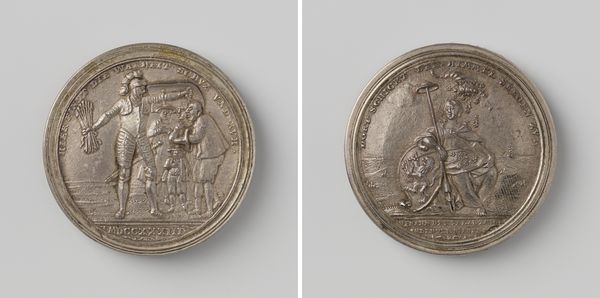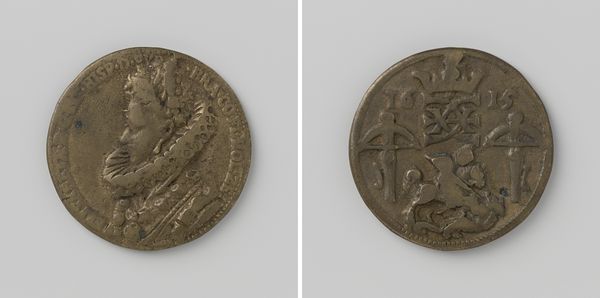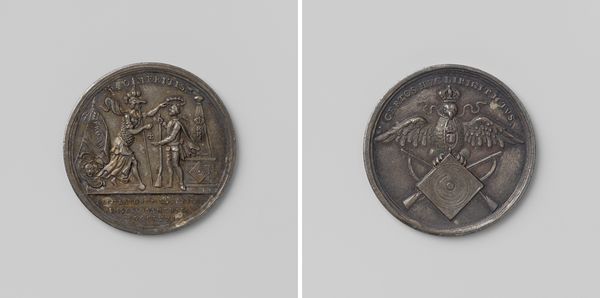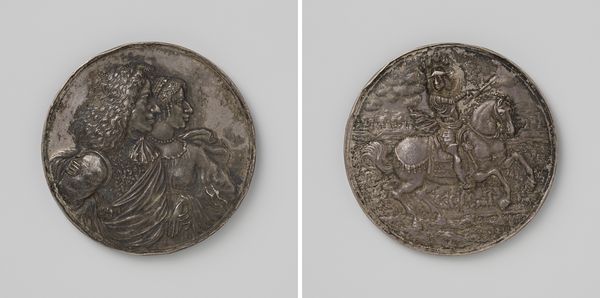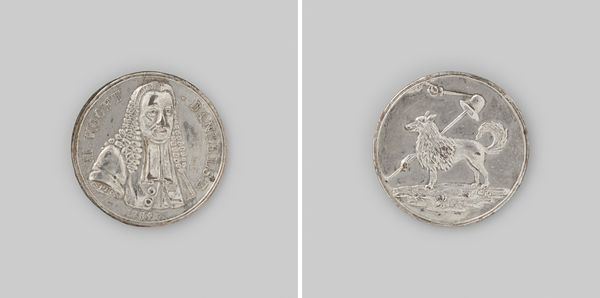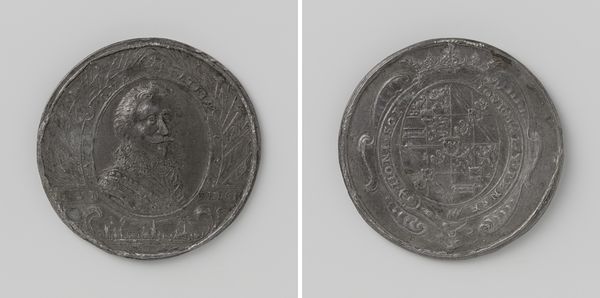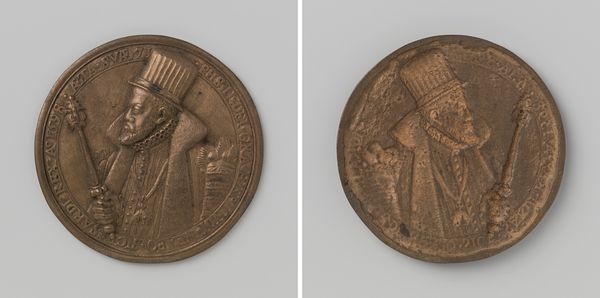
William Sancroft, aartsbisschop van Canterbury en zes andere bisschoppen in de Tower gevangen gezet 1688
0:00
0:00
relief, bronze
#
portrait
#
medal
#
baroque
#
sculpture
#
relief
#
bronze
#
ceramic
#
history-painting
Dimensions: diameter 5.2 cm, weight 80.69 gr
Copyright: Rijks Museum: Open Domain
Curator: This is a bronze relief from 1688 entitled "William Sancroft, Archbishop of Canterbury and six other bishops imprisoned in the Tower." Editor: It strikes me as somber, almost weighty, not just in the literal material but also in the visual representation. The multiple figures give it a feeling of solidarity but also confinement. Curator: Indeed, the imagery on this piece tells a layered story. On one side, we have a solitary portrait of Archbishop Sancroft. On the other, he is joined by six other bishops, their portraits arranged almost like celestial bodies around a central point. What could these groupings signify? Editor: Knowing that it depicts their imprisonment, I'd venture that the bronze medium underscores the bishops' resilience, an unyielding response in the face of adversity. The weight of the material itself symbolizes the burden of their convictions. Curator: It could also signal power. Notice how these aren't paintings; they're solid forms, essentially small sculptures. In that period, the Baroque style tended to portray individuals through allegorical symbols; by opting for this solid, tangible form, isn’t the anonymous artist saying that the faith and convictions of these religious figures are, likewise, immutable? Editor: It makes me wonder about the conditions under which this was created. Was this commissioned in secret? What kind of tools were used? Was the act of production itself a quiet act of resistance? Curator: Fascinating questions. What does the use of bronze imply about intended circulation? Was this to be a publicly displayed object or one circulated discreetly among supporters? These circular forms almost resemble commemorative medals, suggesting widespread distribution and popular support. Editor: Yes, that is curious. I would imagine such distribution channels relied heavily on networks of artisans and sympathizers, quietly multiplying these images in defiance of the Crown. Each casting could become an act of material dissent. Curator: It's a potent reminder of how seemingly simple objects can carry immense cultural and historical weight. Editor: A humble reminder, indeed. Art, even in the most compressed forms, has the potential to challenge authority.
Comments
No comments
Be the first to comment and join the conversation on the ultimate creative platform.

